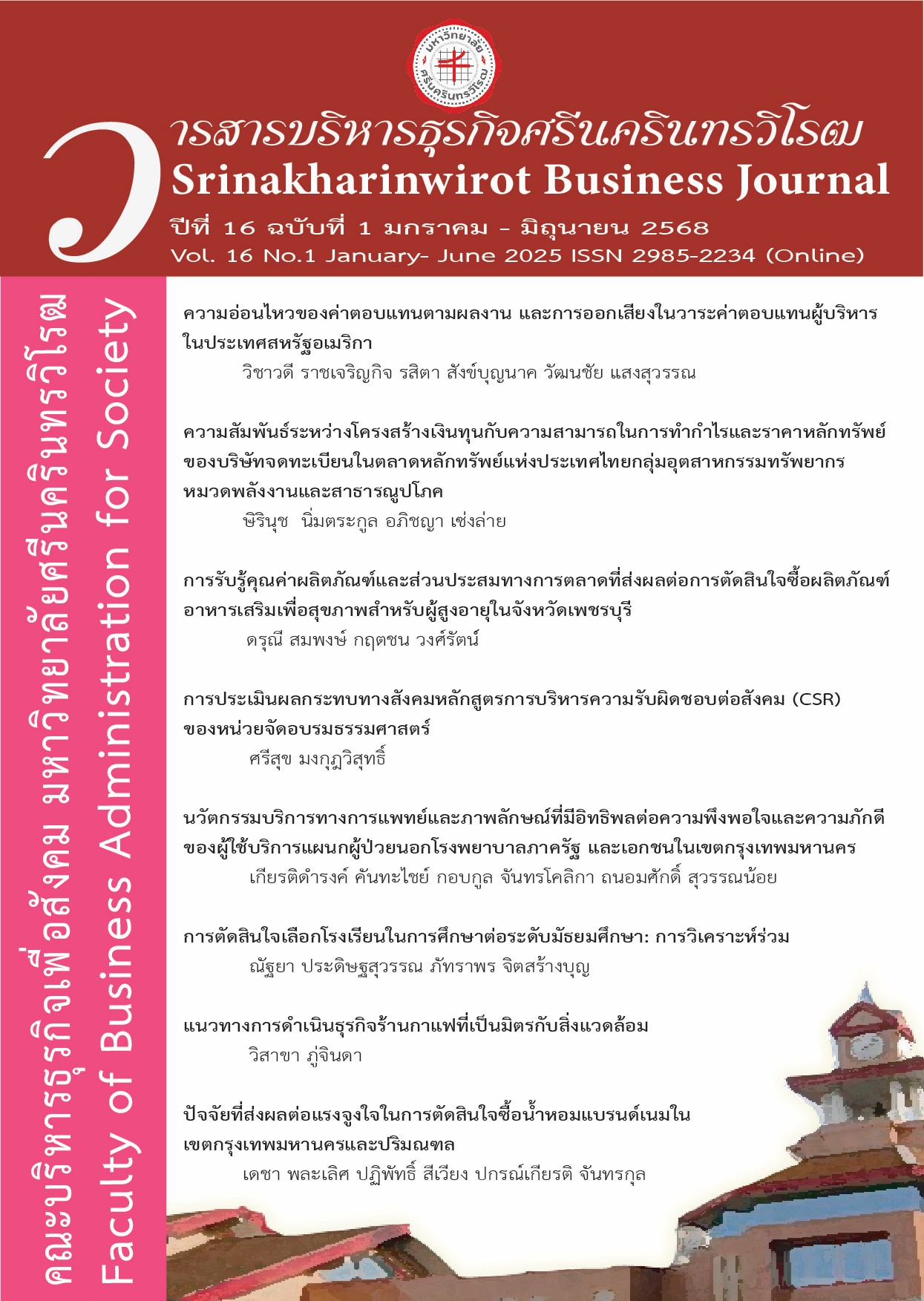HIGH SCHOOL SELECTION DECISION: CONJOINT ANALYSIS
Keywords:
High school, Selection, Decision, Conjoint analysisAbstract
As the education market grows increasingly competitive, it is crucial for education policymakers to develop a better understanding of prospective students' preferences when choosing an institution. With limited resources in the current economic climate, education policy makers must maximize the effectiveness of their efforts to attract prospective students. To achieve this, education policymakers need to be keenly aware of the priorities and significant factors that influence a prospective student's decision in selecting a high school to attend. The purposes of this study were (1) to identify major factors influencing students in their choice of a high school, (2) to investigate the relative importance attached to high school selection attributes, and (3) to compare the personal characteristics of students who prefer a given high school selection.
Initially, focus group interviews were conducted with 20 grade 10 students from four selected high schools in Bangkok. A total of four focus group sessions took place, each group consisting of five participants, to determine the appropriate set of attributes and levels for the conjoint experiment. For the conjoint experiment, a sample comprising 246 respondents was purposively chosen from grade 10 students from four selected high schools in Bangkok. The finding revealed the following: 1) the four most important attributes for selecting a high school were, in order of importance, technology infrastructure, commuting convenience, school reputation, and advice from others, 2) students from families with average monthly incomes higher than 60,000 baht place more emphasis on academic reputation than students from families with an average monthly income between 20,001-60,000 baht and less than 20,000 baht, and 3) students whose families have an average monthly income from 20,000 to 60,000 baht tend to prioritize the convenience of commuting to school more than those whose families earn an average monthly income higher than 60,000 baht.
These results have several implications for high school policymakers seeking to understand the factors shaping elementary students' choice of high school. Policymakers can better tailor high school offerings and support Technology Infrastructure to meet the needs and aspirations of prospective students.
References
Ahmad, S., Buchanan, F. R., & Ahmad, N. (2016). Examination of students’ selection criteria for international education. International Journal of Educational Management, 30(6), 31088-1103. https://doi.org/10.1108/IJEM-11-2014-0145
Agarwal, J., DeSarbo, W. S., Malhotra, N. K., & Rao, V. R. (2015). An Interdisciplinary Review of Research in Conjoint Analysis: Recent Developments and Directions for Future Research. Customer Needs and Solutions, 2(1), 19-40. https://doi.org/10.1007/s40547-014-0029-5
Alonderiene, R., & Klimaviciene, A. (2013). Insights into Lithuanian students' choice of university and study program in management and economics. Management (Croatia), 18, 1-22.
Broda, A., Krüger, J., Schinke, S., & Weber, A. (2018). Determinants of choice of delivery place: Testing rational choice theory and habitus theory. Midwifery, 63, 33-38. https://doi.org/10.1016/j.midw.2018.04.023
Chen, Y., Feng, S., & Yang, C. (2024). Heterogeneous peer effects under endogenous selection: An application to local and migrant children in elementary schools in Shanghai. China Economic Review, 87, 102207. https://doi.org/https://doi.org/10.1016/j.chieco.2024.102207
Eccles, J., & Wigfield, A. (2002). Motivational Beliefs, Values and Goals. Annual Review of Psychology, 53, 109-132. https://doi.org/10.1146/annurev.psych.53.100901.135153
Hair, J., Black, W., Babin, B., & Anderson, R. (2014). Multivariate Data Analysis (7th ed.). UK: Pearson Education Limited.
Kusumawati, Andriani (2011). Understanding Student Choice Criteria for Selecting an Indonesian Public University: A Conjoint Analysis Approach. University of Wollongong. Conference contribution. https://hdl.handle.net/10779/uow.27825966.v1
Malhotra, N. K. (2007). Marketing research: an applied orientation (5th.ed.). Upper Saddle River, NJ. : Pearson Prentice Hall.
Praditsuwan, N. (2015). University Choice in Thailand: Conjoint Analysis. Conference on Interdisciplinary Business and Economics Research, 2nd-3rd July 2015, Osaka, Japan.
Rogosic, S. & Baranovic, B. (2016). Social Capital and Educational Achievements: Coleman vs. Bourdieu. Center for Educational Policy Studies Journal, 6(2), 81-100. https://doi.org/10.26529/cepsj.89
Rudhumbu, N., Tirumalai, A., & Kumari, B. (2017). Factors that Influence Undergraduate Students’ Choice of a University: A Case of Botho University in Botswana. International Journal of Learning and Development, 7, 27. https://doi.org/10.5296/ijld.v7i2.10577
Soutar, G. N., & Turner, J. P. (2002). Students’ preferences for university: a conjoint analysis. International Journal of Educational Management, 16(1), 40-45. https://doi.org/10.1108/09513540210415523
Sukhawatthanakun, K., Muangkot, T., Wongpangson, K., Kultangwattana, W., & Promnanuritte, K. (2010). Factors Influencing University Selection of Grade 12 Students in the Upper Northeastern Region of Thailand. Kasetsart Journal of Social Sciences, 31(3), 307–318. https://so04.tci-thaijo.org/index.php/kjss/article/view/246684
Ullah, A., & Mukherjee, A. (2023). School choice decision of middle-class parents in urban India: a sociological introspection. Asian Education and Development Studies, 12(23), 208-220. https://doi.org/https://doi.org/10.1108/AEDS-02-2023-0015
Wang, X. (2009). Institutional Recruitment Strategies and International Undergraduate Student University Choice at two Canadian Universities. Ph.D Thesis, Department of Theory and Policies Studies, University of Toronto.
Whitehead, J.M., Raffan, J., & Deaney, R. (2006). University choice: What Influences the Decisions of Academically Successful Post-16 Students?. Higher education quarterly, 60(1), 4-26.
Downloads
Published
How to Cite
Issue
Section
License
Copyright (c) 2025 Srinakharinwirot Business Journal

This work is licensed under a Creative Commons Attribution-NonCommercial-ShareAlike 4.0 International License.
วารสารบริหารธุรกิจศรีนครินทรวิโรฒ ยินดีรับบทความวิจัยและบทความทางวิชาการด้านบริหารธุรกิจ เพื่อพิจารณาตีพิมพ์เผยแพร่ในวารสาร ซึ่งทัศนะและข้อคิดเห็นใดๆ ในวารสารฯ ถือเป็นความคิดเห็นและความรับผิดชอบโดยตรงของผู้เขียน มิใช่เป็นความคิดเห็นและความรับผิดชอบใดๆ ของคณะบริหารธุรกิจเพื่อสังคม มหาวิทยาลัยศรีนครินทรวิโรฒ ผู้ประสงค์จะนำบทความหรือบทวิจารณ์ใดๆ ไปเผยแพร่ จะต้องได้รับการอนุญาตจากวารสารเป็นลายลักษณ์อักษร ลิขสิทธิ์บทความที่เผยแพร่ทั้งหมดเป็นของวารสารบริหารธุรกิจศรีนครินทรวิโรฒ






